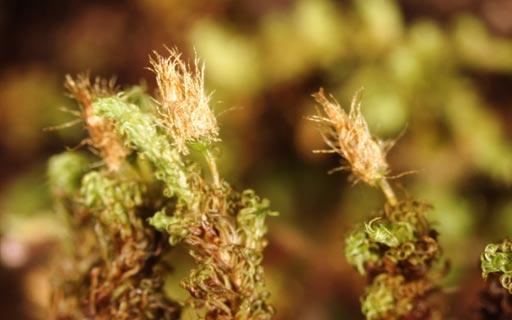
large.jpeg from: https://inaturalist.nz/observations/88236610
Exploring the Fascinating World of Macromitrium ovale Mitt. Moss
Introduction
Mosses are often overlooked, but they play crucial roles in ecosystems around the world. One particularly interesting species is

Macromitrium-prolong01l.jpg from: https://www.digital-museum.hiroshima-u.ac.jp/~museum/habit/moss_habit/Macromitrium prolongatum/Macromitrium_prolongatum.html
Macromitrium ovale Mitt., a moss in the Orthotrichaceae family. In this blog post, we’ll take a closer look at this fascinating plant, from its unique morphology to its global distribution and ecological importance. Get ready to dive into the captivating world of Macromitrium!
Background
Macromitrium ovale Mitt. is a species of moss classified in the Bryophyta division and Bryopsida class. The Orthotrichaceae is a large family of mosses found worldwide. Macromitrium is a diverse genus containing hundreds of species, typically characterized by their tufted growth habit and often growing as epiphytes on trees and rocks.
Morphology and Identification
M. ovale forms dense tufts or cushions, with individual stems reaching 1-3 cm tall. Leaves are ovate to lanceolate in shape, 1-2 mm long, with a rounded to acute apex. The leaf margins are entire and often recurved. A key identifying feature is the smooth leaf cells lacking papillae.
Sporophytes are common, with ovoid to cylindrical capsules borne on short setae. The peristome (toothed structure around the capsule mouth) is usually single with 16 teeth. Calyptrae (cap-like covering over the capsule) are mitrate and hairy.
Global Distribution and Habitat
M. ovale has a wide distribution, found in tropical and subtropical regions of the Americas, Africa, Asia, and the Pacific. It commonly grows as an epiphyte on tree trunks and branches in moist forests and woodlands from lowlands to montane elevations. This species can also colonize rocks and cliffs in sheltered, humid sites.
Ecological Roles and Adaptations
As an epiphyte, M. ovale plays important roles in intercepting and retaining moisture, cycling nutrients, and providing microhabitats for invertebrates in forest canopies. Its dense growth helps buffer the host tree from temperature extremes and water loss.
This moss has several adaptations for the epiphytic habit:
- Rhizoids that anchor it to bark
- Water-absorbing leaf surfaces
- Desiccation tolerance to withstand periodic drying
- Wind-dispersed spores for colonizing distant habitats
Conclusion
Macromitrium ovale Mitt. is a prime example of the incredible diversity and ecological significance of mosses. From tropical treetops to temperate cliffs, this species demonstrates the remarkable adaptability of bryophytes. Next time you’re in a forest, take a closer look – you might just spot the characteristic tufts of this marvelous moss! What other tiny wonders are waiting to be discovered in the world of mosses?